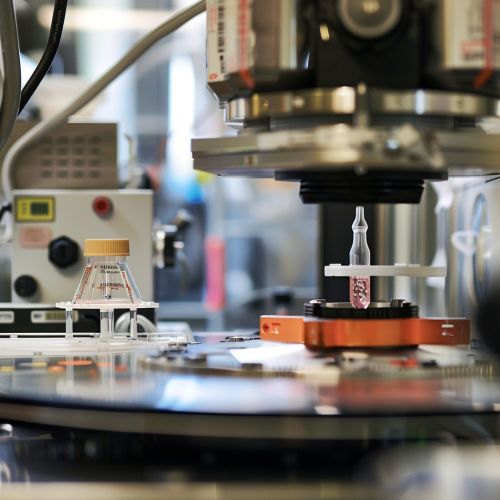Radiolysis
Introduction
Radiolysis is a process that involves the dissociation of molecules by radiation. It is a form of chemical reaction that occurs when a substance, particularly a solid or liquid, absorbs energy from ionizing radiation. The energy disrupts the substance's molecular structure, causing it to break down into smaller molecules, atoms, or ions.


Process of Radiolysis
The process of radiolysis begins when a substance absorbs energy from ionizing radiation. This energy can come from various sources, such as x-rays, gamma rays, beta particles, or alpha particles. The absorbed energy disrupts the substance's molecular structure, causing it to break down into smaller molecules, atoms, or ions.
The products of radiolysis can vary widely, depending on the type of substance and the type of radiation involved. For example, the radiolysis of water can produce hydrogen and oxygen gases, while the radiolysis of certain organic compounds can produce a variety of complex molecules.
Applications of Radiolysis
Radiolysis has many practical applications in various fields. In the field of nuclear power, radiolysis is used to study the effects of radiation on materials used in nuclear reactors. This helps in understanding how these materials will behave under the intense radiation conditions inside a reactor, and in designing materials that can withstand these conditions.
In the field of chemistry, radiolysis is used as a tool for studying chemical reactions. By using radiation to initiate a reaction, chemists can study the reaction's intermediate stages, which are often too short-lived to be observed by other means.
In the field of food preservation, radiolysis is used in the process of food irradiation. This involves exposing food to ionizing radiation to kill bacteria and other pathogens, thereby extending the food's shelf life.
Radiolysis in Space
Radiolysis also occurs in space, particularly on icy bodies like comets and the icy moons of outer planets. When these bodies are exposed to cosmic radiation, the ice can undergo radiolysis, producing gases such as hydrogen and oxygen. This process is believed to contribute to the thin atmospheres of these bodies.
Radiolysis in Medicine
In the field of medicine, radiolysis has potential applications in cancer treatment. Researchers are studying the use of radiolysis to produce reactive species that can kill cancer cells. This approach, known as radiation therapy, involves targeting a tumor with ionizing radiation. The radiation causes radiolysis of water molecules in the tumor, producing reactive species that can damage the cancer cells.
Conclusion
Radiolysis is a complex process with wide-ranging implications and applications. From its role in the operation of nuclear reactors to its potential use in cancer treatment, the study of radiolysis continues to be an important area of research in various scientific fields.
